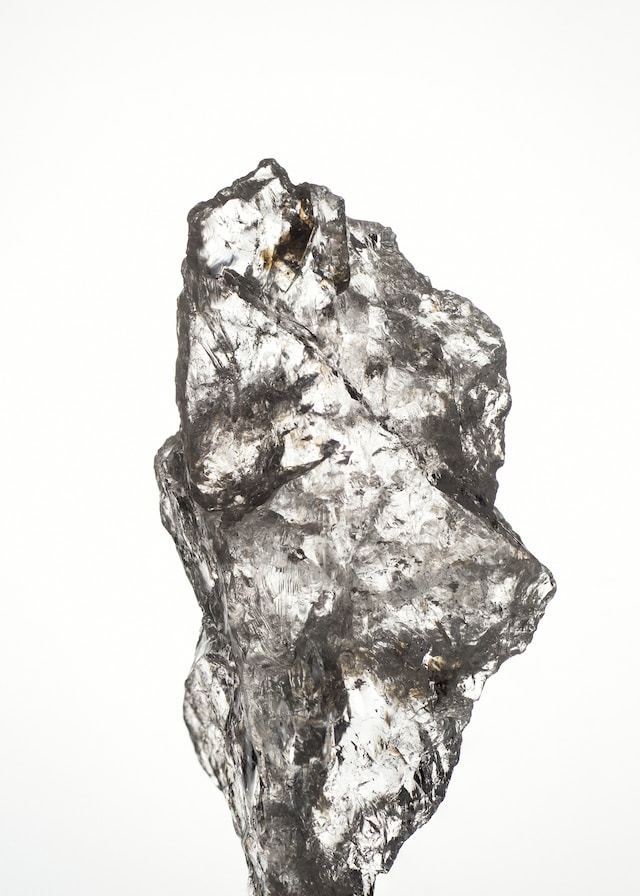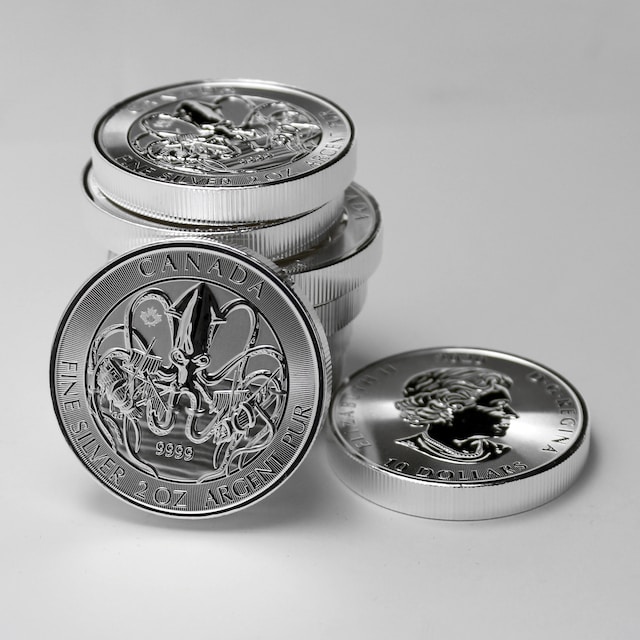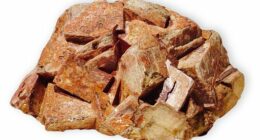Silver and platinum are both precious metals, but platinum is denser, more durable, and rarer than silver, making it more expensive and often preferred for jewelry and industrial applications.
What is silver?
(Photo by Scottsdale Mint on Unsplash )

Silver is a metallic element that has been prized for its beauty and versatility for thousands of years. It is one of the most common elements found in the earth’s crust, and it can be mined from various locations around the world.
Pure silver is too soft to use in jewelry or other applications, so it is often alloyed with other metals such as copper to make it more durable. Sterling silver, which contains 92.5% silver and 7.5% other metals, is a popular choice for jewelry and household items.
In addition to its aesthetic appeal, silver also has many industrial uses due to its high electrical conductivity and thermal conductivity. It is used in electronics, batteries, mirrors, solar panels, water purification systems and many other applications.
Silver has traditionally been seen as a store of value throughout history but today it’s considered an affordable investment option compared to gold or platinum because of their higher prices per ounce.
Silver remains highly sought after by both investors and collectors alike due to its unique properties that make it useful across industries while maintaining its inherent beauty over time.
What is platinum?
(Photo by Irina Iacob on Unsplash )

Platinum is a rare and precious metal that is highly valued for its unique characteristics. It is a dense, malleable, and ductile metal with a silvery-white appearance. Platinum has a high melting point and is resistant to corrosion and tarnishing, making it an ideal material for use in jewelry, electronics, and other industrial applications.
One of the most notable features of platinum is its rarity. It is estimated that only about 5-7 million ounces of platinum are mined each year, compared to over 800 million ounces of silver. This scarcity helps to make platinum more valuable than many other metals.
In addition to its physical properties, platinum also has some interesting chemical properties. For example, it can act as a catalyst in various chemical reactions due to its ability to absorb hydrogen atoms on its surface. This property makes it useful in the production of fertilizers and other chemicals.
Platinum’s unique combination of physical and chemical properties makes it an incredibly valuable metal with a wide range of uses across many different industries.
Silver Vs. Platinum – Key differences
When it comes to precious metals, silver and platinum are two of the most popular choices. While they may look similar at first glance, there are some key differences between the two.
One major difference is their rarity and value. Platinum is actually much rarer than silver, which means it commands a higher price point. In fact, platinum has historically been more expensive than gold due to its scarcity.
Another notable difference is in their physical properties. Platinum is stronger and more durable than silver, making it an ideal choice for jewelry that will be worn frequently or subjected to daily wear and tear. Silver can tarnish over time if not properly cared for, while platinum maintains its shine and luster even with regular use.
There’s also a difference in color between the two metals. Silver has a bright white hue that many people love, while platinum tends to have a slightly darker tone. Some people prefer this muted shade as it can add depth and dimension to jewelry designs.
In short, both silver and platinum have their own unique advantages depending on your needs and preferences – whether you’re looking for durability or affordability or something else entirely!
Which is more valuable silver or platinum?
Silver and platinum are both precious metals, but which one holds more value? The answer to this question is not as straightforward as you might think. While platinum is generally considered more valuable than silver, there are several factors that can affect their worth.
One of the main reasons why platinum is typically viewed as being more valuable than silver is due to its scarcity. Platinum is much rarer than silver, with only a few hundred tons mined each year compared to thousands of tons for silver.
Another key factor that affects the value of these metals is demand. While both silver and platinum have various industrial uses, they also hold significant cultural significance in terms of jewelry-making and investment purposes. As such, fluctuations in consumer demand can result in shifts in market prices for both metals.
It’s important to note that while platinum may be considered more valuable overall, there are certainly instances where individual pieces of silver may fetch higher prices due to their rarity or historical significance.
While there isn’t necessarily a clear-cut answer to whether silver or platinum holds greater value, understanding the various factors at play can help inform your decision when considering investments or purchasing precious metal jewelry.
How can I tell the difference between platinum and silver?
The difference between platinum and silver is not always obvious at first glance, but there are some key characteristics that can help you distinguish one from the other. One of the easiest ways to tell them apart is by their color – silver has a bright, shiny appearance, while platinum is more muted with a white or grayish hue.
Another way to differentiate between these metals is by their weight. Platinum tends to be much heavier than silver due to its density and purity level. You may also notice that platinum items often have markings indicating their purity level, such as “PT” followed by a number representing parts per thousand.
If you’re still unsure about whether you’re dealing with silver or platinum, try conducting a simple acid test on an inconspicuous area of the piece in question. This involves applying a small drop of nitric acid onto the metal and observing any changes in color or texture.
In any case, it’s important to remember that both silver and platinum are valuable materials that require careful handling and storage. Whether you’re investing in jewelry or bullion for financial purposes, taking the time to properly identify your precious metals will ensure that they maintain their worth over time.
Does platinum turn black?
Platinum is known for its beautiful, shiny and lustrous appearance that makes it a popular choice for jewelry pieces. However, one of the most commonly asked questions by people who own platinum jewelry is whether or not it turns black over time.
The answer to this question is both yes and no. Platinum does not tarnish like silver does, but it can develop a patina over time due to wear and tear. This patina can make the metal appear darker or duller than when it was first purchased.
Fortunately, cleaning your platinum jewelry regularly can prevent this from happening. You can use a soft cloth with mild soap and warm water to gently clean your platinum pieces in order to maintain their shine.
It’s important to note that if you notice significant discoloration or changes in color on your platinum piece, it may not be genuine platinum. In such cases, seeking advice from an expert jeweler might be necessary.
While platinum may develop some discoloration over time due to normal wear and tear, proper care will help keep your precious jewelry looking as good as new for years on end.
How can you tell if platinum is real?
One of the most important things to know when buying platinum is how to determine if it’s real or not. There are a few different ways you can tell if your platinum jewelry or bullion is authentic.
First, look for markings that indicate that the piece is made out of platinum. Real platinum will typically have marks like “950Pt” or “PLAT” stamped on it. These markings indicate that the item contains at least 95% pure platinum.
Another way to test if your jewelry is made from real platinum is with a magnet. Platinum isn’t magnetic, so if your piece of jewelry sticks to a magnet, then it’s likely fake.
You can also perform an acid test using nitric acid and aqua regia to determine whether or not your piece is genuine. However, this should only be done by professionals as these chemicals can be dangerous.
It’s important to note that some fake pieces may still have stamps and markings indicating they’re made from real metal, so always buy from reputable dealers and get items appraised before purchasing.
Determining whether or not your item is made from genuine platinum requires careful inspection and testing methods in order to avoid being scammed with fake products posing as high-quality precious metals.
Featured Image By – Zlaťáky.cz on Unsplash








